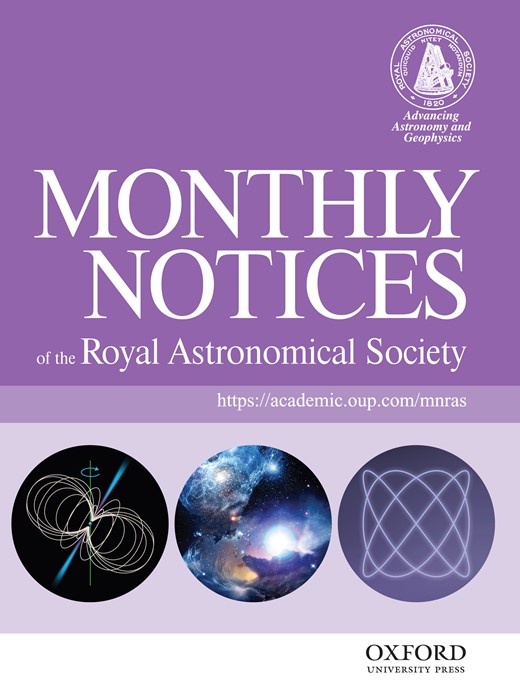-
PDF
- Split View
-
Views
-
Cite
Cite
M. van der Klis, G. Hasinger, T. Dotani, K. Mitsuda, F. Verbunt, B. W. Murphy, J. van Paradijs, T. Belloni, K. Makishina, E. Morgan, W. H. G. Lewin, Simultaneous ROSAT/Ginga observations of 4U 1820 – 30, Monthly Notices of the Royal Astronomical Society, Volume 260, Issue 3, February 1993, Pages 686–692, https://doi.org/10.1093/mnras/260.3.686
Close - Share Icon Share
Abstract
We have made simultaneous Ginga LAC and ROSAT PSPC observations of 4U 1820 – 30. The 685-s orbital light curves obtained with the two instruments are very similar, indicating that the energy dependence of the orbital modulation is small. Our measurements extend the baseline over which the period variations can be measured to 15 yr. The previous possibility, that the changes in the period are themselves periodic, with a period of about 8 yr, is no longer preferred over a constant Ṗ. Over the interval 1976–91 the period has decreased, rather than increasing as predicted by the standard model for the orbital evolution of the binary. The average period derivative Ṗ/P was ( – 0.88 ± 0.16) × 10–7 yr–1, different by 11σ from the predicted value. Under the assumption that there are no intrinsic changes in the light curve that mimic a period change, we discuss three possible explanations. The possibility that the observed Ṗ is due to spin-orbit coupling (with a companion that is out of corotation due to stellar radius changes) is rejected, as there is no known mechanism that could cause these radius changes. The possibility of acceleration of the system by the gravitational potential of the cluster is reinvestigated in the light of a new detailed model of the mass distribution of NGC 6624. We conclude that it is unlikely that acceleration by the cluster can fully explain the observed Ṗ. Acceleration by a distant triple companion or in a chance encounter with another star in the cluster remains a possibility. Finally, we investigate the possibility that the companion is a helium-burning star. This could explain the observed Ṗ, but the likelihood of this scenario depends strongly on unknown aspects of the stellar population of NGC6624.



